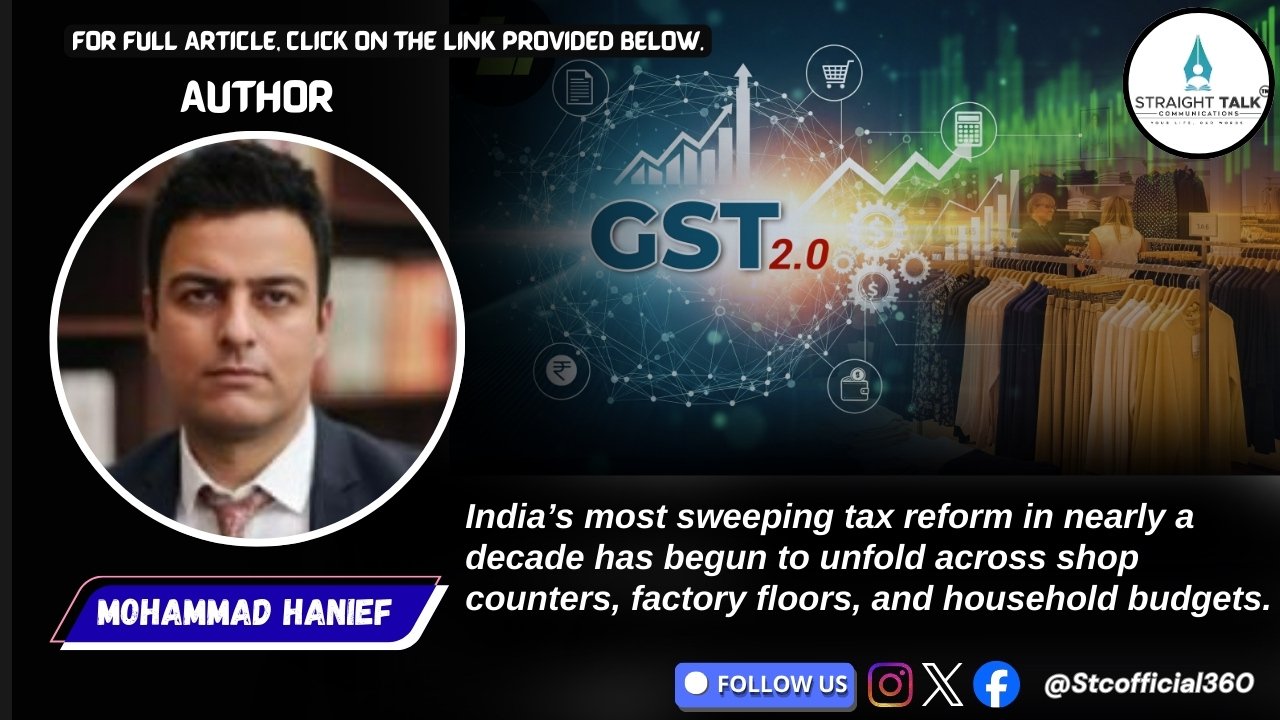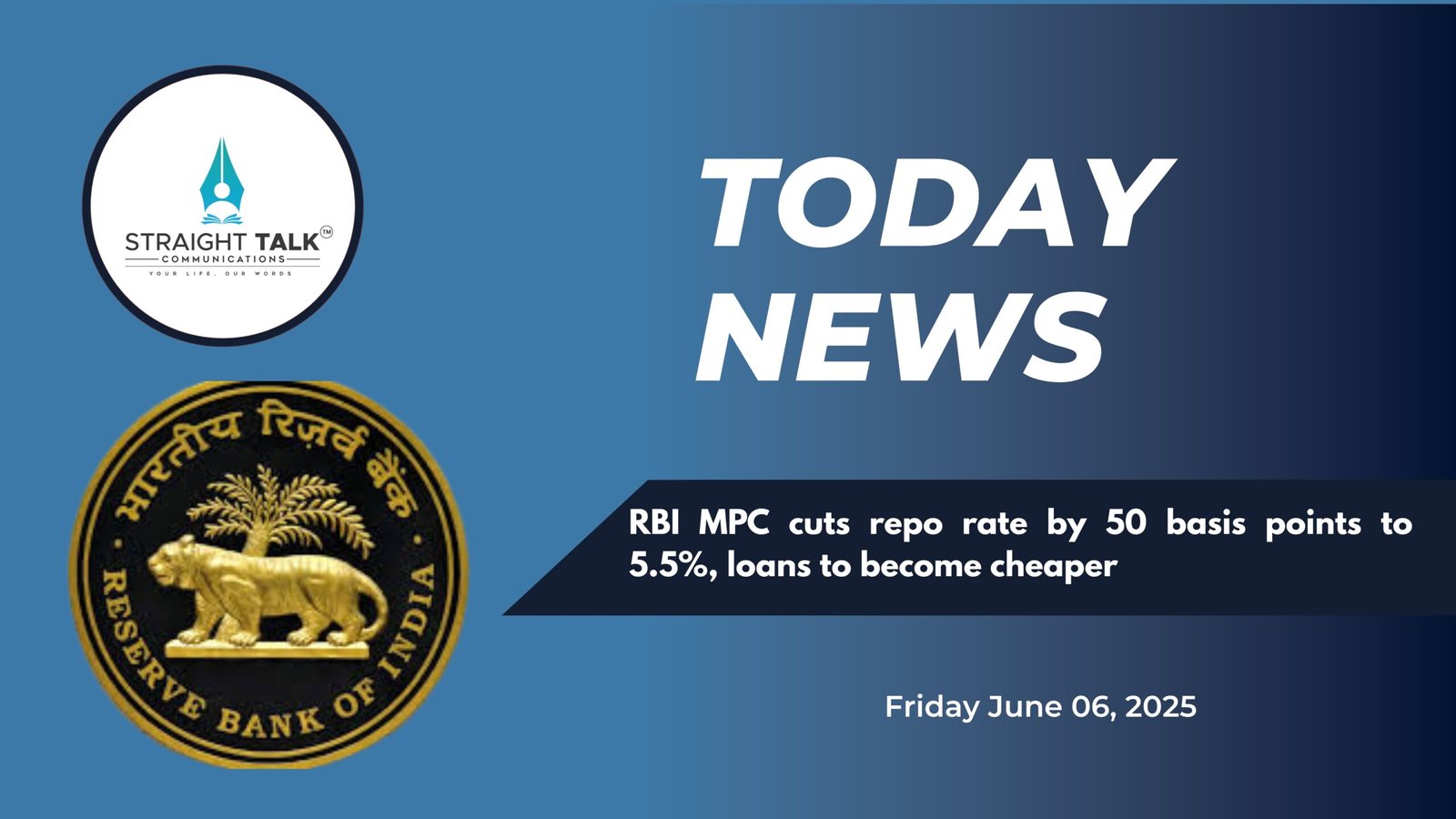WAIT & WATCH: GST 2.0 begins to reshape markets

Mohammad Hanief
India’s most sweeping tax reform in nearly a decade has begun to unfold across shop counters, factory floors, and household budgets. The revamped Goods and Services Tax—popularly called GST 2.0—came into effect on 22 September 2025, streamlining the country’s indirect-tax structure and promising a rare combination of cheaper essentials, simpler compliance, and sharper levies on luxury and “sin” goods.
The measure, approved at the fifty-sixth meeting of the GST Council earlier this month, replaces the earlier four-tier system of 5, 12, 18 and 28 per cent with just three broad rates: a five-per-cent slab for essential goods and services, a standard 18 per cent rate for most items, and a steep 40 per cent for high-end or harmful products. Supporters hail it as the boldest fiscal reset since the original GST was introduced in 2017.
Within days of the rollout the reform is already visible in everyday life. Across major cities and smaller towns, prices of staples such as bread, paneer and traditional sweets have dropped as bakers and dairy suppliers adjust to the new five-per-cent slab. Personal-care items—soaps, shampoos and toothpaste—have seen similar reductions. Pharmacies report lower bills for a wide range of medicines after life-saving drugs were exempted from tax and many others moved to the lowest bracket. Perhaps most striking for families is the removal of GST on life and health-insurance premiums, a change long sought by consumer groups. Agents say inquiries for new policies rose noticeably in the week after the announcement, signalling a potential expansion of financial protection in a country where insurance penetration has remained stubbornly low.
The benefits extend to rural India as well. Agricultural implements, fertilizers, pumps and even sewing machines now carry the five-per-cent rate, easing costs for farmers and small entrepreneurs. For those managing thin margins in villages and small towns, the shift promises measurable savings through the harvest and festive seasons ahead.
The reform is equally significant for manufacturers and retailers of consumer durables. Items that once attracted a 28-per-cent levy—including refrigerators, washing machines, air-conditioners and televisions—now fall into the standard 18-per-cent category. Major electronics brands have already trimmed price tags, with some large-screen televisions discounted by tens of thousands of rupees. Automobile makers, from market leaders to niche players, are issuing revised price lists that lower the cost of popular models by amounts ranging from a few thousand to more than a lakh. Cement, a key input for housing and infrastructure, has shifted to the same standard rate. Builders and contractors say this could reduce construction costs and revive stalled projects, providing a welcome push to the real-estate sector after years of high input prices.
Not every market segment is celebrating. The creation of a 40-per-cent slab for luxury and de-merit goods is reshaping strategy in industries that depend on high-end consumption. Makers of luxury cars, yachts, private aircraft, premium spirits and tobacco products face a much heavier tax burden. Early indications suggest distributors are recalibrating inventories and revising sales forecasts downward as consumers weigh the steeper costs. The government is unapologetic about this tilt. Policymakers argue that taxing luxury and harmful products more aggressively not only discourages undesirable consumption but also offsets the revenue lost from easing rates on essentials. Initial projections suggest the lower slabs could cost the exchequer about ₹48,000 crore annually, a gap New Delhi hopes to fill through higher collections from the top bracket and improved compliance across the board.
Clarity is the other pillar of the reform. The original GST, despite its promise of “one nation, one tax,” grew complicated over time as multiple slabs and special exemptions created ambiguity. Businesses often found themselves embroiled in disputes over how a product should be classified: was a particular snack taxable at 12 or 18 per cent, or did a sweetened beverage qualify as a luxury drink? Such disagreements clogged tribunals and courts, increasing uncertainty and costs. GST 2.0 aims to sweep away much of that confusion. By consolidating goods and services into just three categories, the government expects fewer disputes, faster adjudication and a reduction in the administrative burden on both tax officers and entrepreneurs.
Small and medium enterprises stand to gain the most. Under the earlier regime, delayed refunds and intricate filings tied up working capital and discouraged formalisation. The Council has pledged a streamlined digital filing system and faster refund mechanisms alongside the new structure. Entrepreneurs in the informal and rural economy—where bookkeeping resources are limited—may find compliance less daunting, encouraging more businesses to come within the tax net.
Financial markets have offered an early endorsement. On the first trading day after the announcement, the Sensex and Nifty 50 both posted gains as analysts projected stronger consumer spending and a friendlier business climate. Shares of automobile, housing and consumer-durable companies led the rally, reflecting expectations of revived demand. Economists also point to potential improvements in India’s ease-of-doing-business ranking. A simpler, more predictable tax system could attract foreign investment by reducing the risk of sudden disputes and lowering the cost of compliance. Over time, the reform may enhance India’s fiscal credibility and align with the government’s Atmanirbhar Bharat vision of a self-reliant, investment-friendly economy.
Yet challenges remain. State governments, which rely heavily on GST revenue, are wary of near-term shortfalls as the lower rates on essentials take effect. Several have sought assurances of timely compensation from the Centre. Any delays could strain state budgets already stretched by welfare commitments and infrastructure projects. Businesses face transitional headaches of their own. Updating billing systems, printing new price labels and retraining staff are costly and time-consuming. Smaller retailers in particular report confusion as they rush to interpret which items fall into which slab. Consumer groups warn that unless authorities monitor pricing closely, some companies may pocket the tax cuts instead of passing them on to buyers. There is also the question of long-term revenue stability. While the government expects the 40-per-cent slab and improved compliance to make up for the estimated loss, skeptics caution that sustained high taxes on luxury and harmful goods could eventually dampen demand to the point where collections fall short.
For now, though, the most tangible proof of GST 2.0 is in the marketplace. Shoppers in city supermarkets and village bazaars alike are noticing lighter grocery bills. Electronics stores advertise festival discounts that combine seasonal offers with the new lower tax. Auto showrooms report a spike in foot traffic from buyers who had been delaying purchases in anticipation of the reform. The benefits reach beyond urban centres. Farmers buying fertilizer pumps, tailors investing in new sewing machines and families renewing health-insurance policies are all discovering that the new rates leave more money in their pockets. Even state-owned power utilities expect to pass on modest savings to consumers as taxes on key inputs fall, lowering monthly electricity bills.
India’s first GST rollout in 2017 was heralded as a landmark in fiscal integration, but its complex structure gradually eroded that promise. GST 2.0 seeks to restore it, balancing the government’s revenue needs with consumer relief and social objectives. By reducing the number of slabs, cutting compliance costs and aligning taxation with health and welfare priorities, the reform positions itself as more than a fiscal tool—it is also a social and economic instrument. The months ahead will test whether those ambitions are realised. Much depends on the speed with which refunds are processed, the efficiency of digital filing systems and the Centre’s ability to compensate states. If these pieces fall into place, GST 2.0 could well mark a decisive turning point, reshaping India’s fiscal landscape and reinforcing its reputation as a competitive, investment-friendly economy.
As the festive season gathers pace, millions of Indians will experience the reform not through policy papers or council meetings but in the everyday relief of lower bills, affordable appliances and accessible insurance. In markets from Kashmir to Kanyakumari, the lighter price tags tell the story of a tax revolution just beginning to take hold.
(The author is a senior analyst in Kashmir)







